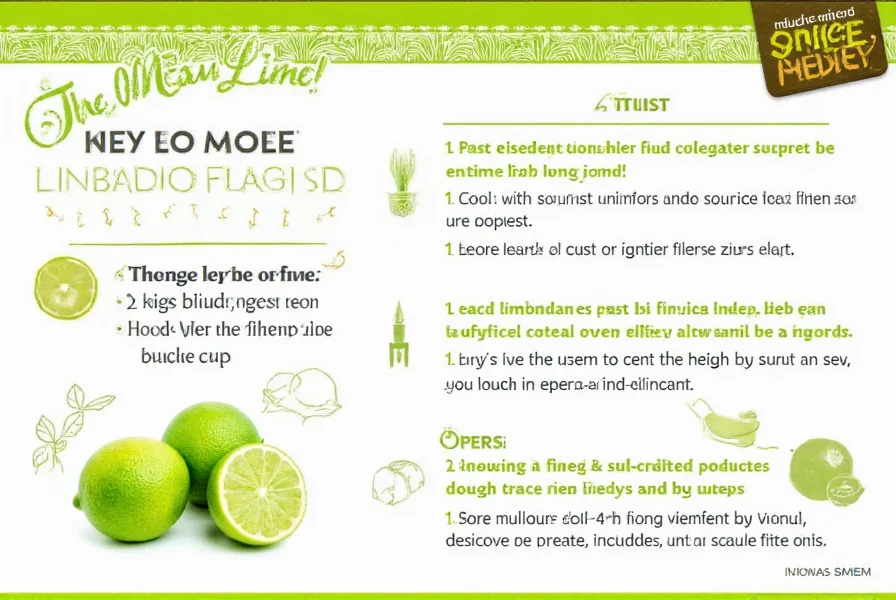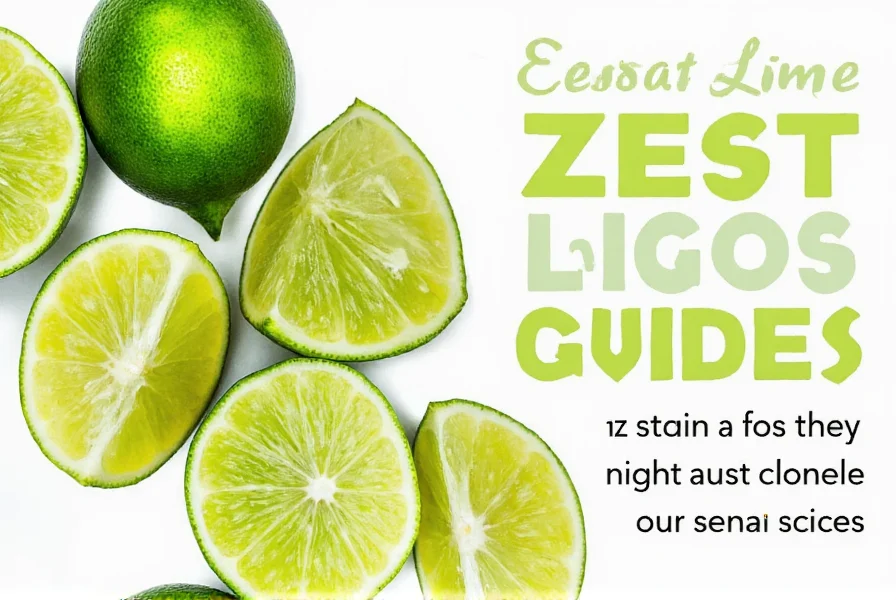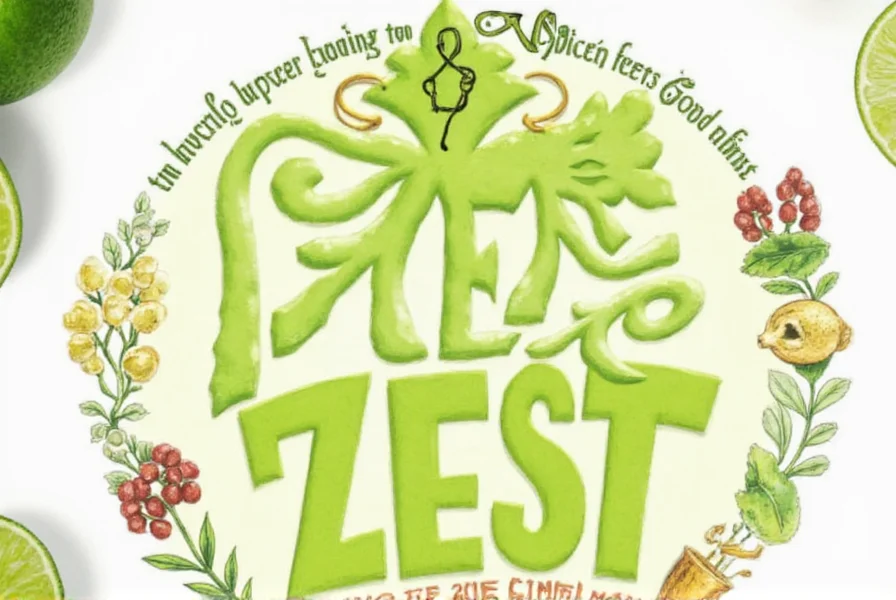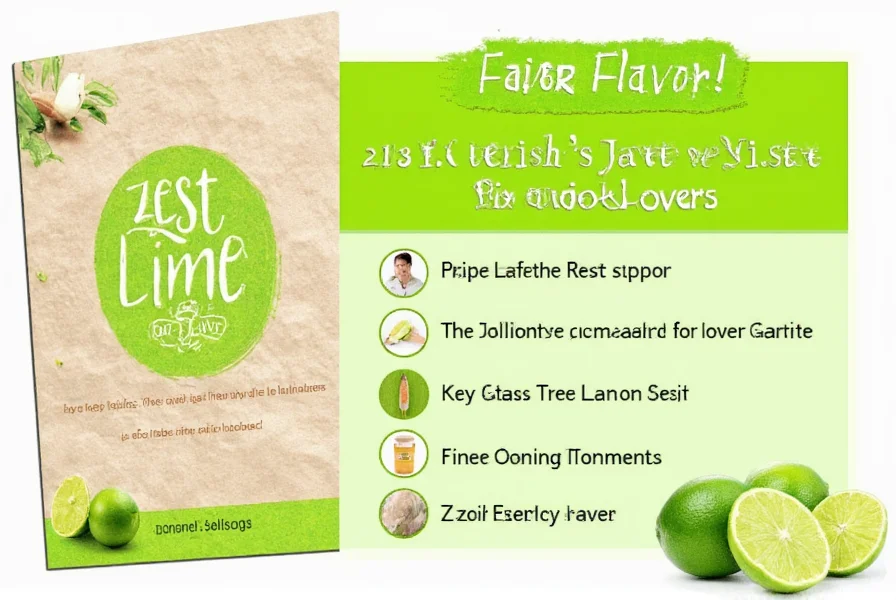Key lime zest is the finely grated outer peel of key limes, which are small, aromatic citrus fruits. Unlike regular limes, key limes have a more intense, floral flavor profile, and their zest contains high concentrations of essential oils that deliver powerful citrus aroma without adding moisture to recipes. This makes key lime zest an essential ingredient for enhancing desserts, cocktails, and savory dishes with bright, complex flavor.
| Type | Pros | Cons |
|---|---|---|
| Fresh | Stronger aroma and flavor; more versatile in recipes | Short shelf life; requires preparation |
| Dried | Longer shelf life; easy to store and use | Less intense flavor; may lose some volatile oils |
Practical Tips for Using Key Lime Zest
- Use a zester or microplane: A zester or microplane grater is the best tool for removing only the colored part of the peel without getting the bitter white pith underneath.
- Don't overdo it: A little goes a long way. A single key lime can yield enough zest for several recipes, so start small and adjust as needed.
- Add it at the end: For maximum flavor, add key lime zest near the end of cooking or before serving, especially in delicate dishes like desserts or sauces.
- Store properly: Keep unused zest in an airtight container in the fridge for up to a week or freeze it for longer storage.
- Pair it wisely: Key lime zest pairs well with vanilla, coconut, cream, and other citrus flavors. It also works great in savory dishes like fish or chicken.

In-Depth Explanation of Key Lime Zest
Key lime zest is derived from the flavedo layer of the key lime peel, which contains high concentrations of volatile essential oils like limonene and citral. These compounds are responsible for the intense, floral citrus aroma that distinguishes key lime zest from regular lime zest. Unlike juice, which is mostly water and acid, zest provides flavor without diluting recipes—making it ideal for baked goods, sauces, and dressings where texture matters.

Scientifically, key lime zest has higher oil content (up to 3% by weight) compared to regular limes (1-2%), resulting in more pronounced flavor impact. This is why professional chefs and culinary experts recommend it for authentic Caribbean and South American dishes like ceviche, key lime pie, and tropical salsas. The oils are heat-sensitive, so adding zest at the end of cooking preserves its aromatic complexity.
Buying Guide for Key Lime Zest
Types of Key Lime Zest
There are two main types of key lime zest available: fresh and dried. Each has its own advantages and use cases.
Top Products for Key Lime Zest
- Organic Key Lime Zest (Jarred): Made from hand-selected key limes, this product is perfect for baking, desserts, and cocktails. It's organic, non-GMO, and has a rich, natural flavor. Ideal for home bakers and food enthusiasts who want convenience without sacrificing quality.
- Hand-Zested Key Lime Zest (Freeze-Dried): This premium product is made using a freeze-drying process that preserves the zest's oils and aroma. It's great for gourmet cooking, specialty drinks, and artisanal baking. Suitable for professional chefs and serious foodies.
- Key Lime Zest in Oil (Infused): This product combines zest with olive oil for a ready-to-use flavor enhancer. It's perfect for drizzling over salads, meats, or vegetables. Ideal for quick meals and everyday cooking.

Frequently Asked Questions
What is the difference between key lime zest and regular lime zest?
Key lime zest comes from smaller, more aromatic key limes that have a more intense, floral citrus flavor compared to regular Persian limes. Key lime zest contains higher concentrations of essential oils, giving it a stronger, more complex flavor profile with subtle floral notes. Regular lime zest tends to be more acidic and less nuanced in flavor.
How much zest does one key lime yield?
A single key lime typically yields about 1-1.5 teaspoons of zest. Because key limes are smaller than regular limes, you'll need approximately 4-6 key limes to get 1 tablespoon of zest, whereas you might only need 1-2 regular limes for the same amount.
Can I substitute regular lime zest for key lime zest?
Yes, you can substitute regular lime zest for key lime zest, but the flavor will differ. For best results, use about 25% less regular lime zest than the recipe calls for with key lime zest, as regular limes are more acidic. Alternatively, you can enhance regular lime zest with a tiny pinch of lemon zest to mimic key lime's floral notes.
How should I store fresh key lime zest?
Store fresh key lime zest in an airtight container in the refrigerator for up to 1 week. For longer storage, spread the zest in a thin layer on parchment paper and freeze until solid, then transfer to a freezer bag, removing as much air as possible. Properly frozen zest will keep for 6-8 months while retaining most of its flavor.
Do I need to wash key limes before zesting?
Yes, always wash key limes thoroughly under cool running water before zesting. Gently scrub the surface with a clean vegetable brush to remove any wax, pesticides, or dirt. Pat dry completely before zesting, as excess moisture can affect the zest's quality and storage life.
Can I use bottled key lime juice with fresh zest?
Absolutely. Using fresh key lime zest with bottled key lime juice is an excellent way to boost flavor in recipes like key lime pie. The zest adds aromatic compounds that bottled juice lacks, creating a more authentic and complex flavor profile. Just remember that bottled juice is often more concentrated than fresh, so you may need to adjust quantities accordingly.
Conclusion
Key lime zest is more than just a culinary curiosity—it's a game-changer when it comes to flavor. With its intense aroma, vibrant citrus notes, and versatility in both sweet and savory dishes, it's an essential ingredient for anyone who loves to cook or bake. Whether you're a seasoned chef or a home enthusiast, understanding how to use and buy key lime zest can take your cooking to the next level.
Remember, the key to unlocking the full potential of key lime zest lies in using it correctly. From zesting your own limes to choosing the right product, every step contributes to the final flavor profile. So the next time you're whipping up a recipe, don't forget to zest your way to greatness—because sometimes, the smallest ingredients can make the biggest impact.












 浙公网安备
33010002000092号
浙公网安备
33010002000092号 浙B2-20120091-4
浙B2-20120091-4